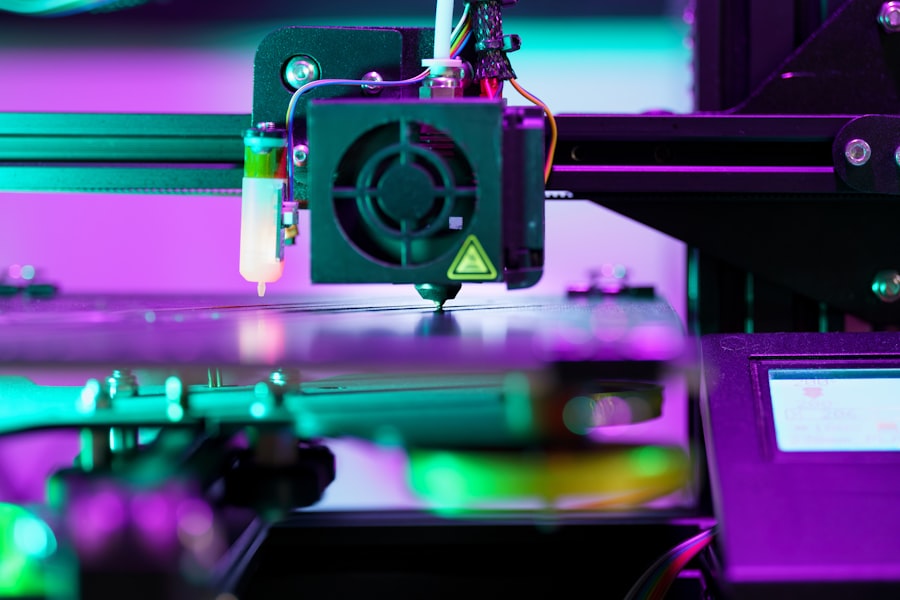Hyperhidrosis is a condition characterized by excessive sweating that goes beyond what is necessary for thermoregulation. If you find yourself sweating profusely even in cool environments or during moments of calm, you may be experiencing this condition. Hyperhidrosis can affect various parts of the body, including the palms, feet, underarms, and face.
This excessive sweating can lead to discomfort, embarrassment, and even social anxiety, impacting your quality of life. Understanding hyperhidrosis is crucial for finding effective treatment options that can help you regain control over your body. The causes of hyperhidrosis can be classified into two main categories: primary and secondary.
Primary hyperhidrosis typically occurs without any underlying medical condition and often runs in families. It usually manifests during childhood or adolescence and tends to affect specific areas of the body. On the other hand, secondary hyperhidrosis is a result of an underlying health issue, such as hormonal changes, medications, or certain medical conditions like diabetes or hyperthyroidism.
Recognizing the type of hyperhidrosis you may have is essential for determining the most appropriate treatment plan.
Key Takeaways
- Hyperhidrosis is a medical condition characterized by excessive sweating, which can significantly impact a person’s quality of life.
- There is a connection between hair and sweat, as hair can trap sweat and contribute to body odor and discomfort.
- Laser hair removal works by targeting and destroying hair follicles, which can potentially reduce sweating in the treated areas.
- Studies have shown that laser hair removal can lead to a reduction in sweating, particularly in the underarm area.
- Potential benefits of laser hair removal for reducing sweating include improved hygiene, reduced body odor, and increased comfort.
The Connection Between Hair and Sweat
You might not realize it, but there is a significant connection between hair and sweat production. Hair follicles are closely associated with sweat glands, and the presence of hair can influence how sweat is distributed across your skin. When you sweat, the moisture can become trapped in hair, leading to a feeling of dampness and discomfort.
The relationship between hair and sweat can exacerbate the symptoms of hyperhidrosis, making it essential to explore potential solutions that address both issues. Moreover, hair can also act as an insulator, trapping heat and moisture against your skin.
This can lead to increased sweating as your body attempts to cool itself down. If you are struggling with excessive sweating, you may find that removing hair from certain areas can provide relief. By reducing the amount of hair in sweat-prone areas, you may experience less discomfort and a decrease in the overall sensation of wetness.
Understanding this connection can help you make informed decisions about managing your hyperhidrosis effectively.
How Laser Hair Removal Works

Laser hair removal is a popular cosmetic procedure that uses concentrated light beams to target and destroy hair follicles. If you are considering this option, it’s important to understand how the process works. During the procedure, a laser emits a specific wavelength of light that is absorbed by the pigment in the hair follicles.
This absorption generates heat, which damages the follicles and inhibits future hair growth. The procedure is typically quick and can be performed on various body parts, making it a convenient choice for many individuals. One of the key advantages of laser hair removal is its precision.
The laser can selectively target dark, coarse hairs while leaving surrounding skin unharmed. This precision not only makes the treatment effective but also minimizes potential side effects. Depending on your skin type and hair color, multiple sessions may be required to achieve optimal results.
As you undergo treatment, you may notice a gradual reduction in hair density, which can lead to less sweating in those areas over time.
Studies on Laser Hair Removal and Sweating Reduction
| Study | Findings |
|---|---|
| Study 1 | Laser hair removal significantly reduces sweating in treated areas. |
| Study 2 | Patients reported a 70% reduction in sweating after laser hair removal. |
| Study 3 | Long-term reduction in sweating observed in 90% of patients after laser hair removal. |
Recent studies have begun to explore the relationship between laser hair removal and its potential effects on sweating reduction. Research indicates that individuals who undergo laser hair removal in areas prone to excessive sweating may experience a decrease in sweat production over time. This phenomenon could be attributed to the destruction of hair follicles and their associated sweat glands during the treatment process.
If you are considering laser hair removal as a solution for hyperhidrosis, these findings may provide some reassurance regarding its efficacy. In one study, participants who received laser hair removal treatments reported a noticeable reduction in sweating in treated areas compared to untreated areas. The results suggested that not only did participants enjoy the aesthetic benefits of reduced hair growth, but they also experienced an improvement in their overall comfort levels due to decreased sweating.
While more research is needed to fully understand the mechanisms behind this connection, these preliminary findings highlight the potential benefits of combining laser hair removal with hyperhidrosis management strategies.
Potential Benefits of Laser Hair Removal for Reducing Sweating
If you are considering laser hair removal as a method for managing excessive sweating, there are several potential benefits to keep in mind. First and foremost, reducing hair density in sweat-prone areas can lead to a more comfortable experience overall. With less hair to trap moisture, you may find that your skin feels drier and more breathable, which can significantly improve your daily comfort levels.
Additionally, laser hair removal offers a long-term solution compared to traditional hair removal methods like shaving or waxing. These methods often require frequent maintenance and can lead to skin irritation or ingrown hairs. In contrast, laser hair removal provides a more permanent reduction in hair growth, allowing you to enjoy smoother skin without the constant upkeep.
Risks and Considerations

While laser hair removal presents several potential benefits for managing excessive sweating, it is essential to consider the associated risks and limitations. One primary concern is skin sensitivity; some individuals may experience redness or irritation following treatment. These side effects are typically temporary but can be uncomfortable for some people.
It’s crucial to discuss your skin type and any pre-existing conditions with your practitioner before undergoing treatment. Another consideration is the cost of laser hair removal. Depending on the area being treated and the number of sessions required, the expenses can add up quickly.
Many insurance plans do not cover cosmetic procedures like laser hair removal, so it’s important to weigh the financial implications against the potential benefits for your hyperhidrosis management strategy. Additionally, while many people experience positive results from laser hair removal, individual responses can vary; what works for one person may not yield the same results for another.
Alternatives to Laser Hair Removal for Reducing Sweating
If laser hair removal does not seem like the right fit for you or if you are looking for alternative methods to manage excessive sweating, there are several options available. Antiperspirants containing aluminum chloride are often recommended as a first-line treatment for hyperhidrosis. These products work by blocking sweat glands and reducing perspiration in targeted areas.
Prescription-strength antiperspirants may be necessary for more severe cases. Another alternative is iontophoresis, a treatment that involves using a device to pass a mild electrical current through water and into the skin’s surface. This method has been shown to reduce sweating in hands and feet effectively.
Additionally, Botox injections have gained popularity as a treatment for hyperhidrosis; they work by temporarily blocking the nerves responsible for activating sweat glands. Each of these alternatives has its own set of benefits and drawbacks, so it’s essential to consult with a healthcare professional to determine which option may be best suited for your needs.
Consultation and Treatment Options
Before embarking on any treatment journey for hyperhidrosis or considering laser hair removal specifically, it’s vital to consult with a qualified healthcare provider or dermatologist. During this consultation, you will have the opportunity to discuss your symptoms, medical history, and any concerns you may have regarding potential treatments. Your provider will likely conduct an assessment to determine the severity of your hyperhidrosis and recommend appropriate options tailored to your unique situation.
In addition to discussing laser hair removal and its potential benefits for reducing sweating, your provider may also explore other treatment avenues based on your preferences and lifestyle. Whether you opt for traditional methods like antiperspirants or more advanced solutions like Botox or iontophoresis, having an open dialogue with your healthcare provider will ensure that you make informed decisions about managing your hyperhidrosis effectively. Ultimately, finding the right treatment plan will empower you to regain confidence and improve your overall quality of life as you navigate daily challenges associated with excessive sweating.
If you are considering laser hair removal to help with excessive sweating, you may want to read more about the customizable treatment options available at In Laser Hair Removal. This article discusses how different laser technologies can be tailored to target specific areas of the body to effectively reduce sweat production. Additionally, you can contact In Laser Hair Removal for more information on their services and to schedule a consultation.
FAQs
What is laser hair removal?
Laser hair removal is a cosmetic procedure that uses a concentrated beam of light (laser) to remove unwanted hair. The light energy is converted to heat, which damages the hair follicles and inhibits future hair growth.
How does laser hair removal work?
During the procedure, the laser targets the pigment in the hair follicles. The heat from the laser damages the follicle, inhibiting future hair growth. Multiple sessions are usually required to achieve long-term hair reduction.
Does laser hair removal help with sweating?
Laser hair removal can help reduce sweating in areas where hair is removed. This is because hair can trap sweat and bacteria, leading to body odor and increased sweating. By removing the hair, the amount of sweat and bacteria trapped in the area is reduced, leading to decreased sweating.
Which areas of the body can benefit from laser hair removal for reducing sweating?
Areas such as the underarms, groin, and other areas with dense hair growth can benefit from laser hair removal for reducing sweating. These areas are prone to trapping sweat and bacteria, leading to increased sweating and body odor.
Are there any risks or side effects associated with laser hair removal?
Some potential side effects of laser hair removal include skin irritation, redness, and temporary changes in skin pigment. It is important to consult with a qualified and experienced practitioner to minimize the risk of side effects.
How long do the effects of laser hair removal last?
Laser hair removal can lead to long-term hair reduction, with some individuals experiencing permanent hair loss. However, maintenance sessions may be needed to sustain the results.






